Jun 04, 2025
Author:Amanda Lyu

Oriental Shorthairs aren’t your average lap cats. They’re long, lean, chatty—and built for longevity. But how long do they really live? A lot of people guess 10 to 12 years. That’s off.
These elegant, athletic cats regularly stretch well beyond that when cared for correctly. Diet, genetics, stress, and environment all play a role in how long they stick around. And small habits make a big difference.
This guide breaks down what actually affects Oriental Shorthair lifespan, what you can do to increase it, and what signs to watch as they age. We’ll cut through assumptions and get straight to what matters most: helping these stunning cats live their best, longest lives.
Here’s what we’re covering:
● What the average Oriental Shorthair lifespan really is
● Factors that influence how long they live
● Daily habits that can increase their longevity
● Signs your Oriental Shorthair is aging—and what to do about it
Stick around. We’re about to show you how small changes at home can add years to their life—and peace of mind to yours.
Oriental Shorthairs aren’t short-timers. They tend to stick around—really stick around. If you’re expecting 10 to 12 years, you’re selling them short. Most live 12 to 15 years without breaking a sweat. With the right care? 18 to 20 isn’t unusual. It’s backed by the data, not wishful thinking.
A large-scale study of over 100,000 cats showed that Oriental breeds, including the Oriental Shorthair, had a median lifespan of 14.2 years. Nearly 1 in 5 made it past 17. That’s not luck. That’s the pattern.
So what’s working in their favor?
● Genetics help—these cats come from Siamese lineage, known for impressive longevity.
● Their long, lean frames keep strain off the joints and support agility well into their senior years.
● They're naturally less prone to obesity, which means fewer metabolic issues down the line.
But here’s the catch—longevity isn’t automatic. It's shaped by daily routines, vet care, mental stimulation, and how much stress they deal with at home. The little things add up fast. Get those right, and you’re not just adding years—you’re adding quality to those years.
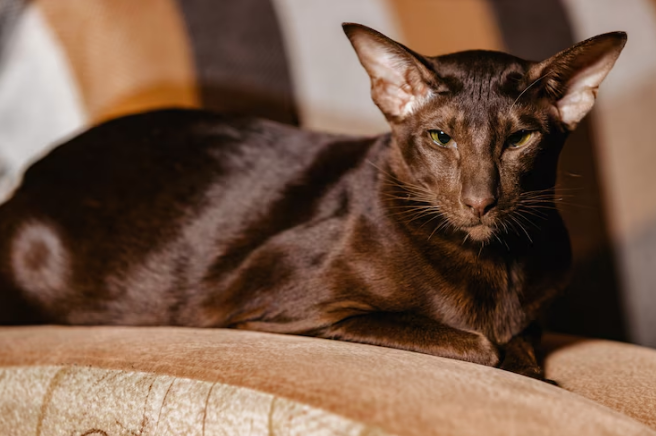
Lifespan isn’t random. It’s the outcome of a mix of controllable and uncontrollable factors—and for Oriental Shorthairs, certain patterns stand out. Let’s break them down clearly.
Oriental Shorthairs are a derivative of Siamese stock, engineered for elegance, vocal intelligence, and agility. But with that shared bloodline comes a known set of genetic liabilities.
Hereditary conditions observed in Oriental Shorthairs include:
● Hypertrophic Cardiomyopathy (HCM) – a thickening of the heart muscle that can lead to heart failure if unmonitored. While not as prent as in Maine Coons, the risk is still present and must be screened by a feline cardiologist using echocardiography.
● Progressive Retinal Atrophy (PRA) – a degenerative condition that causes gradual vision loss, typically beginning in early adulthood. DNA testing helps identify carriers and prevent propagation.
● Amyloidosis – an inherited disorder where abnormal protein buildup affects liver or kidney function. It often presents subtly—monitoring enzymes through blood panels becomes key after age 5.
Buying from a certified breeder who provides genetic health screening for parents and keeps multigenerational health records significantly lowers lifespan-related uncertainty. For cats already in the home, the focus should shift toward early diagnosis and long-term risk monitoring.
Diet and Portion Control
Caloric intake directly impacts organ stress, weight regulation, and metabolic efficiency. Oriental Shorthairs are naturally lean, with fast metabolisms, but they’re also prone to hyperphagia (excessive hunger) if understimulated or misfed.
Key nutritional strategies:
● Protein-forward diet: Aim for 35–45% animal-based protein. These cats are obligate carnivores—grains, fillers, and excessive plant matter dilute their nutrient absorption.
● Low-carbohydrate threshold: Keep total carbs under 15% on a dry matter basis. Excess starch elevates insulin levels and promotes weight gain, even in active cats.
● Portion accuracy: Maintain daily caloric intake around 200–240 kcal/day for an average 8–10 lb adult cat, adjusted for neuter status and activity level.
Manual feeding often results in inconsistent portions. WOpet smart feeders let you set measured feeding times with gram-level precision—critical for cats prone to bloating, overeating, or food anxiety. Integrating this kind of automation supports metabolic balance, especially in multi-pet households.
Indoor vs. Outdoor Living
Data from veterinary insurers consistently shows that indoor cats live 2 to 5 years longer than those with unrestricted outdoor access. Oriental Shorthairs, with their low body fat and heightened curiosity, face added risks when left outdoors unsupervised.
Environmental risk variables include:
● Zoonotic parasites (Toxoplasma gondii, tapeworms, and Giardia)
● Trauma injuries from vehicles, wildlife, or neighborhood animals
● Toxic exposure to antifreeze, pesticides, or untreated water
● Stress-based immune suppression due to territorial conflicts
Indoor living provides lifespan insulation, but it requires active enrichment to offset the stimulation cats receive naturally outdoors. Rotating toys, introducing vertical space, and enabling remote interaction through HD pet cameras with treat-dispensing functionality (such as WOpet’s) can recreate that engagement safely.
Medical Care and Preventive Vet Visits
Skipping preventive care is a leading cause of shortened lifespan in domestic cats. Oriental Shorthairs, with their vocal personalities and strong human attachment, often mask pain less than other breeds, but that doesn’t mean symptoms always show.
Professional care milestones:
● Annual blood panels beginning at age 3 (bi-annual after age 8) to monitor liver enzymes, kidney function, and early metabolic markers
● Echocardiograms every 2–3 years to monitor cardiac health if HCM is suspected or runs in the lineage
● Full dental cleaning every 12–18 months under anesthesia to prevent systemic inflammation from gingivitis or resorptive lesions
Routine veterinary screenings aren’t just detection tools—they’re proactive lifespan extension strategies. Regular diagnostics give owners the time to adjust care protocols before critical thresholds are crossed.
Stress, Stimulation, and Environment
Oriental Shorthairs are cognitively intensive cats. They're social, emotionally perceptive, and driven by interaction. A low-stimulus environment or an inconsistent household schedule can lead to stress-related issues like overgrooming, food obsession, aggression, and sleep disruption.
Key environmental principles:
● Structured routine: Feeding, play, and interaction schedules help regulate cortisol levels and behavior. Cats in unpredictable homes have shorter stress thresholds, which correlates with immune suppression.
● Multi-sensory enrichment: Use toys that trigger scent, sound, and motion. Food puzzles and rotating hide-and-seek objects activate foraging instincts.
● Safe zones and vertical territory: Window perches, cat trees, and enclosed resting zones reduce overstimulation and territorial tension.
For households that experience variable routines, WOpet's integrated feeder-camera systems offer a practical solution. You can interact with your cat remotely, maintain consistent feeding and treat schedules, and monitor behavioral changes—all of which support neurological and emotional longevity.
Longevity isn’t accidental. It’s built day by day, meal by meal, checkup by checkup. For Oriental Shorthairs, consistency matters more than novelty. Their physiology and temperament respond best to routine. Below are daily habits that reinforce cellular health, emotional stability, and systemic resilience—all key to pushing lifespan toward the 18- to 20-year mark.
● Feed on a Controlled, Consistent Schedule: Irregular feeding patterns disrupt metabolism. Scheduled meals not only regulate energy output—they help prevent obesity, insulin spikes, and stress-based food aggression. Stick to fixed times. Avoid constant grazing. Keep portions aligned with energy use. Measure food by weight, not volume, to prevent caloric miscalculations.
● Brush Teeth and Coat Regularly: Oral bacteria are directly linked to heart, liver, and kidney disease. Daily brushing with a feline-formulated enzymatic toothpaste delays plaque accumulation and reduces inflammatory load. Brushing the coat supports skin integrity and circulation. Oriental Shorthairs have fine, short hair—brushing 3–4 times a week stimulates sebaceous glands and lowers shedding, preventing fur ingestion and GI discomfort.
● Incorporate Short Bursts of High-Engagement Play: Two to three sessions of targeted play (10–15 minutes each) support cardiovascular health, muscle tone, and mental ness. Use movement-based toys that encourage full-body movement—think wand toys, spring jumpers, or rolling chase devices. Rotate activities weekly to avoid behavioral habituation and promote neuroplasticity.
● Conduct Routine Visual and Physical Checks: Get hands-on daily. Check ears for discharge, teeth for tartar, abdomen for bloating, and paws for debris or tenderness. Note any vocal shifts, stool inconsistencies, or litter box avoidance. These micro-signals often precede larger issues by weeks. Establishing a tactile baseline makes it easier to spot subtle physiological changes early.
● Maintain a Predictable Household Environment: Oriental Shorthairs react sharply to chaotic or overstimulating surroundings. Use ambient lighting, keep noise levels controlled, and avoid sudden environmental shifts when possible. Structure matters. Keep their feeding station, litter box, and rest zones in consistent locations. Use scent-marked bedding or familiar objects if you relocate any setup.
Daily execution of these small but precise tasks doesn’t guarantee a longer lifespan, but it significantly improves the odds. Health outcomes improve when care is proactive, routine-based, and attuned to changes before they escalate.
Aging doesn’t happen overnight. It builds quietly, first in the joints, then in the eyes, and eventually in energy patterns and daily behavior. For Oriental Shorthairs, whose personalities are bold and expressive, even slight changes can be early indicators of internal shifts.
The key is knowing what’s normal and what’s not.
● Lower Energy With Subtle Shifts in Movement: Cats that once ran toward the sound of a food scoop may now approach slowly. They still eat, still play—but with reduced intensity or hesitation before jumping or climbing. This often signals early-stage joint stiffness or arthritis. Begin supporting joint mobility with low-impact enrichment and temperature-controlled rest areas.
● Changes in Vocal Behavior or Tone: Oriental Shorthairs are famously vocal. If meows become hoarse, frequent at night, or noticeably decrease in frequency, it’s worth tracking. These changes may indicate thyroid fluctuations, cognitive decline, or discomfort that’s not yet visible. Monitor patterns and consult a vet if tone, pitch, or volume shifts persist for more than a week.
● Increased Litter Box Incidents or Changes in Elimination Patterns: Older cats may miss the box, not from laziness, but because of joint pain, disorientation, or kidney strain. Watch for frequency spikes, urine clumps that grow in size, or new bowel movement textures. Adjusting box height, litter texture, or proximity to favorite resting spots often resolves mild changes early.
● Weight Loss With Normal Appetite: Sustained weight drop, even with steady food intake, can signal organ degradation, especially in the kidneys or thyroid function. Use a digital scale weekly and track changes over time. Unexplained loss of over 5% of body weight should trigger a vet consult, even if behavior seems otherwise normal.
● Increased Grooming or Complete Disinterest in Grooming: Aging cats either groom excessively to relieve skin irritation or avoid grooming due to pain or fatigue. Matted fur, dandruff, or frequent licking of a single area are physical red flags. Assist grooming with a soft-bristle brush and inspect undercoat and skin for irritation or swelling.
● Difficulty With Familiar Physical Tasks: Struggling to leap onto a favorite surface? Hesitating at staircases? Taking longer to descend from furniture? These cues often mark early musculoskeletal decline. Rearranging access routes or adding non-slip ramps can reduce daily strain without removing independence.
Spotting these signs early extends both lifespan and comfort. Your role is to monitor—not obsessively, but intentionally. Consistency in observation beats one-off check-ins every time.
Every year matters when you’ve got a cat that’s built to live long, love hard, and stay active well into their teens. If you’ve made it this far, you’re no longer guessing how long an Oriental Shorthair can live. You know what affects it. You know what to look for. And more importantly, you know how to take control of the outcome.
You’ve now got the tools to stretch those years further—with better routines, smarter observation, and intentional care. Lifespan isn’t about luck. It’s about what you do today that shapes how many healthy tomorrows your cat gets.
Let’s revisit the key takeaways from this guide:
● The average Oriental Shorthair lives 12 to 15 years, often reaching 18+ with proper care
● Genetics matter—but so does choosing a responsible breeder and running early screenings
● Daily portion control, clean protein, and fixed feeding schedules protect long-term health
● Indoor-only living extends lifespan by lowering disease and injury risk
● Preventive vet care, especially dental and cardiac monitoring, keeps aging in check
● Routine behavior tracking catches subtle signs of decline before they become serious
● Smart, low-stress environments support emotional stability and cellular longevity
If you’re ready to make each of those years easier, more consistent, and fully supported, WOpet makes that possible without adding extra work to your plate.
Label:
Popular Post
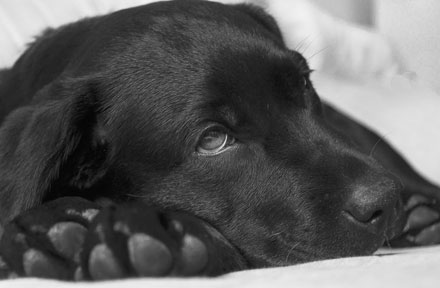
What to Feed a Sick Dog With No Appetite? [2025 Guide]
May 16, 2023
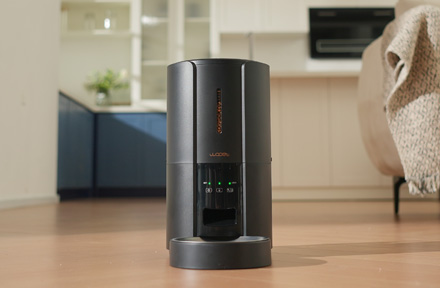
Troubleshooting Common Issues with Automatic Pet Feeders: Tips & Tricks for Pet Owners
Oct 26, 2023
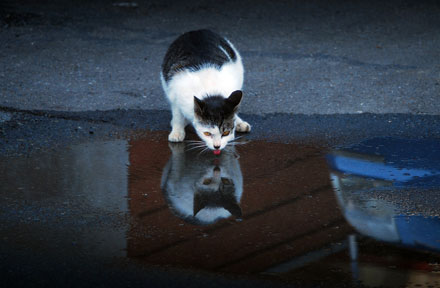
Why Does My Cat Cough After Drinking Water? 8 Potential Reasons
Mar 13, 2023
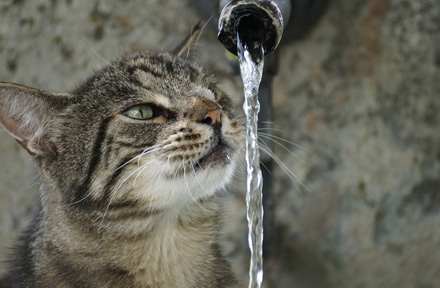
Why is My Cat Throwing up Water? Top 5 Causes Here
Feb 08, 2023
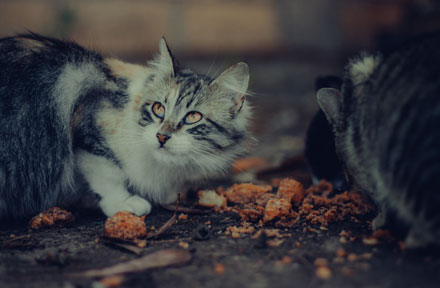
My Cat Only Eats A Little at A Time - What to Do?
Feb 27, 2023
$99.99
$129.99
Copyright © 2025 WOPET. All Rights Reserved.